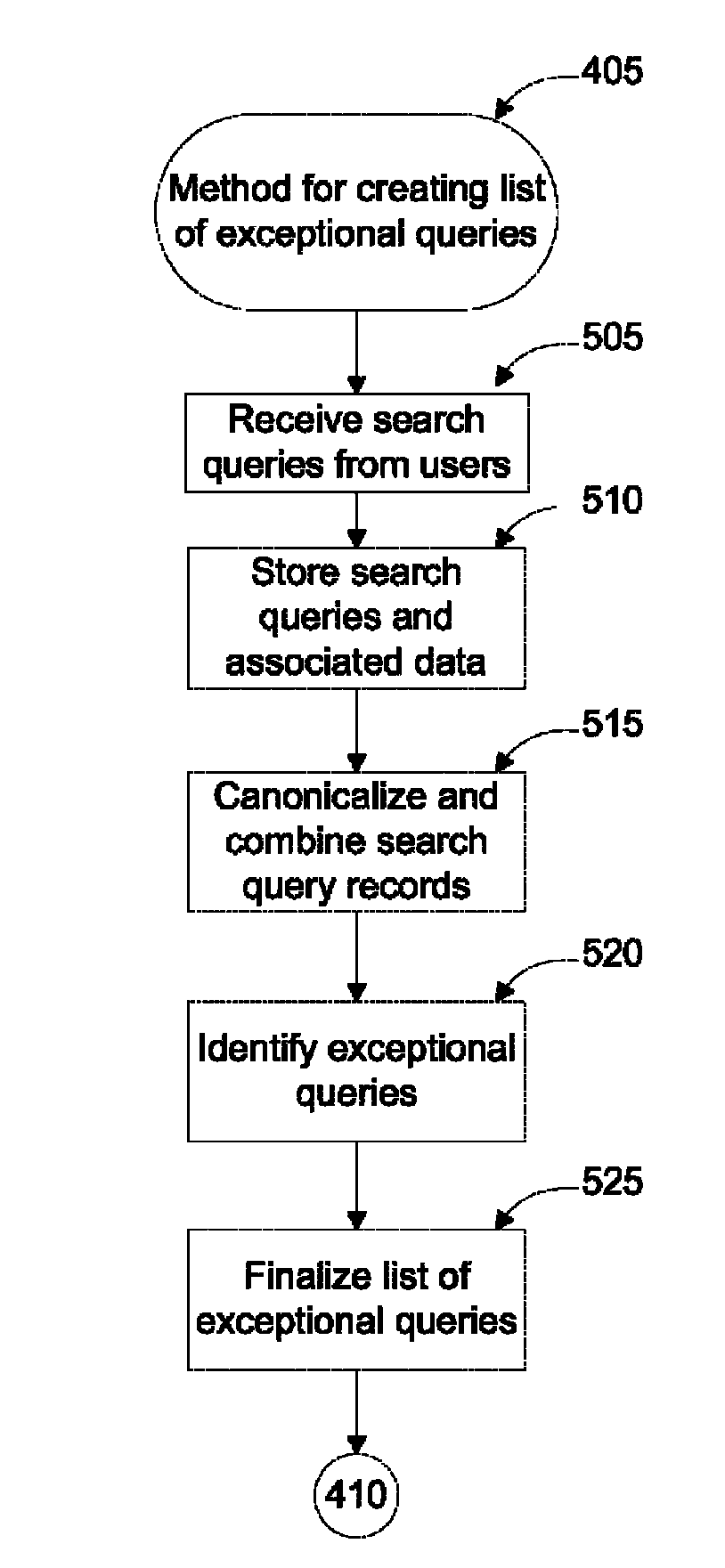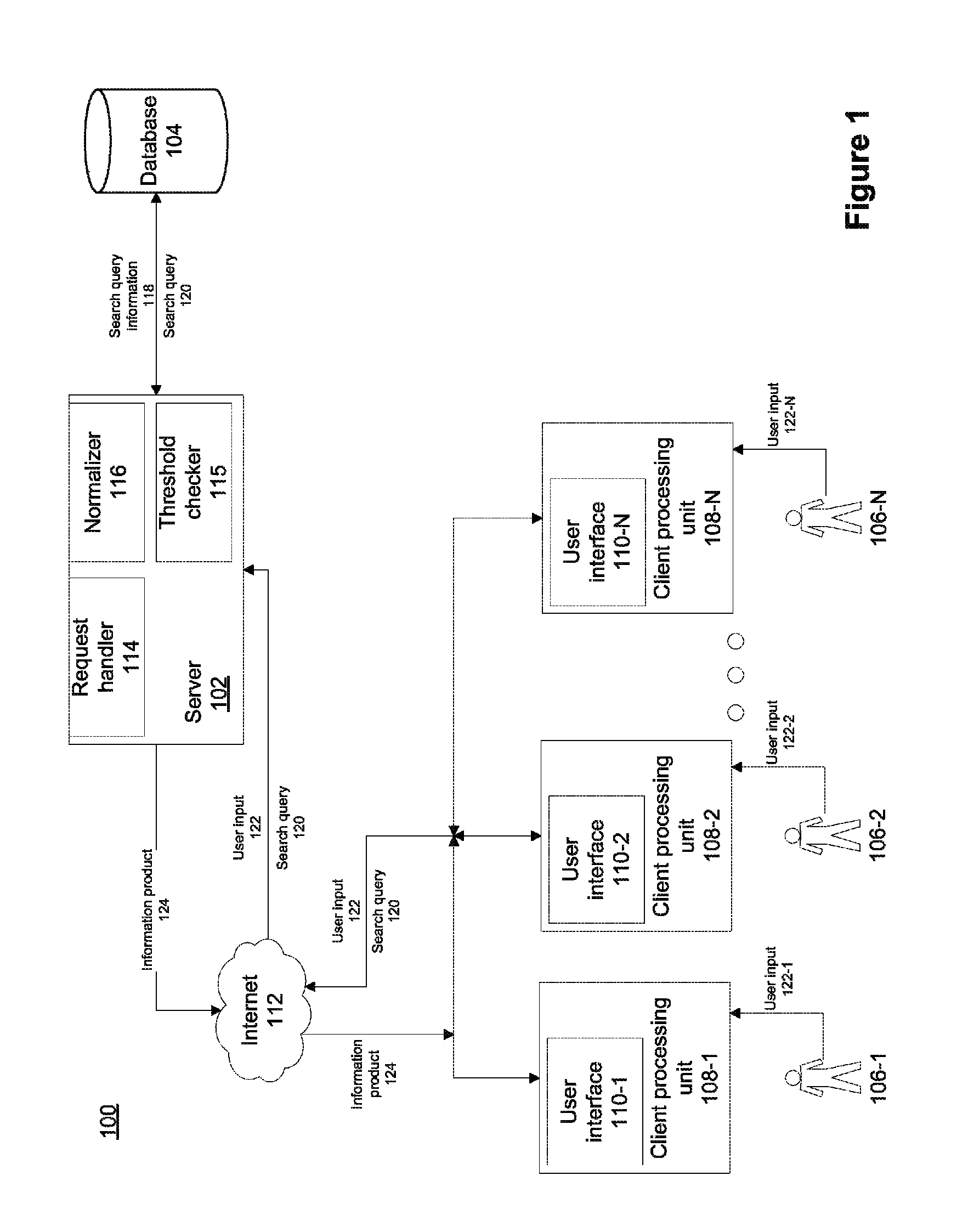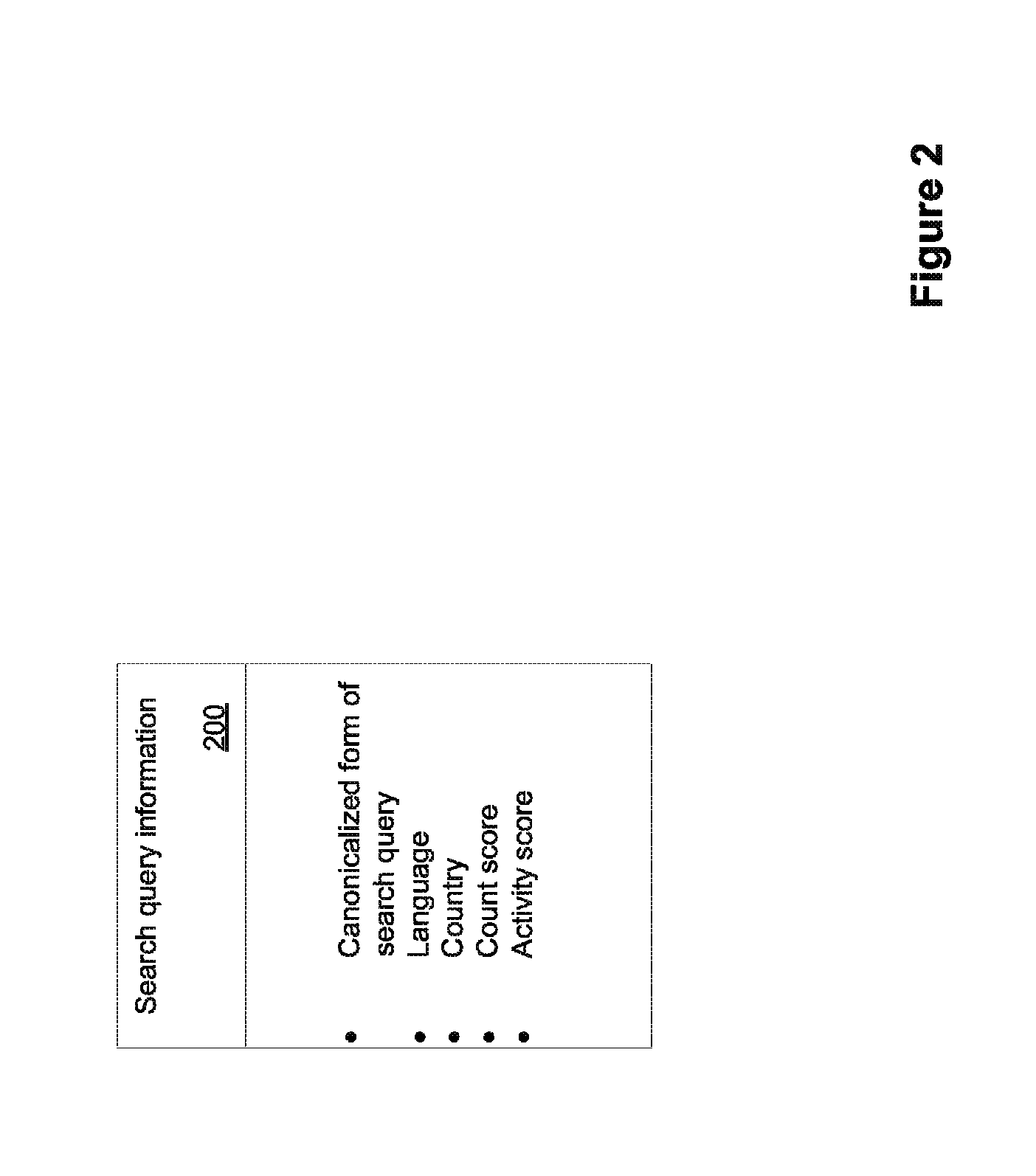[0007]In one aspect, a user interface displays an information product including exceptional queries to a user. The user interface can include a display that shows a list of exceptional queries to the user. The relative activity of the search queries can be determined based upon short time intervals, such as periods of thirty, fifteen, five minutes or one minute in length. Measuring activity of search query within a time period of thirty or fewer minutes can be particularly important in capturing relevant trends in search queries. Many types of events may trigger a sudden—and perhaps short-lived—spike in search queries. For example, if a television program has a special event or guest performer, then there may be a sudden spike in search queries relating to that television program for the duration of the program, which may be about thirty minutes. Other events that may trigger a sudden, short-lived spike in search queries can include, without limitation, weather events passing through a region or country, which may rapidly move through an area, thereby triggering a spike in search queries. Thus, by providing a list of exceptional search queries that is updated in relatively short time periods, e.g., of a half hour or less, or in real time, the users can view time-relevant trends in searches via the user interface.
[0009]In another aspect, the user interface can allow the user to select one of the displayed exceptional queries, and then the user interface can display search results corresponding with the selected query to the user. Such a user interface can be particularly useful for users accessing the interface via a mobile or handheld Internet device, as these devices tend to have relatively small screens and more cumbersome input methods. By providing only a short list of exceptional queries only when those queries are most exceptional and relevant, according to one or more criteria, the small display of the mobile Internet device provides a method for improved mobile access to real time trend information. This advantageous aspect of the present invention is further enhanced in that the display of the mobile device is not cluttered with unhelpful information. Additionally, by providing relevant exceptional queries which the user can select to receive search results, the users may avoid having to use the cumbersome input method of the mobile Internet device to input a query. The user interface also can allow the user to customize certain elements of the display, such as how many exceptional queries to display, to create a separate module to display the exceptional queries, and to set the criteria for determining whether an exceptional query will be displayed to the user.
[0011]In another aspect, one or more information processing units in communication with each other, as well as the information storage units and the user interface, determine the frequencies of search queries and can identify exceptional queries that the user interface can display to the user. The information processing unit or units can include a server for receiving and processing the search query information stored in the database, and for serving the search query information to the user interface. The server can combine various related search queries to provide more accurate and useful search query information. For example, the server can combine records for equivalent search queries stored in the database that are in different languages. Such functionality may be particularly significant in regions or countries where multiple writing systems are used, such as Japan, which uses Hiragana and Katakana systems, as well as Kanji characters and western alphanumeric characters. The server also can process the search query information to combine search query information for misspelled versions of a search query with the information for the correctly-spelled version. Additionally, the server can process the search query information stored in the database to filter out inappropriate terms, such as those relating to explicit or inappropriate material.
[0012]In another aspect, a mobile device for displaying query information to a user and for receiving requests from the user regarding query information can include a user interface for data entry, the user interface including at least a display; and processing capacity for allowing receipt of data from the user interface, transmission of instructions to the user interface, communication with at least one server handling search queries and serving responses to queries, and communication with at least one server generating sets of exceptional queries. The mobile device can allow for the use of the processing capacity to receive over a network a set of exceptional queries, the exceptional queries being queries that have been selected, prior to receipt over the network by the mobile device, according to at least one preselected criterion, the set of exceptional queries including at least one query if the at least one query satisfies the at least one preselected criterion, but including zero queries if no query satisfies the at least one preselected criterion; display the at least one received exceptional query on the display of the user interface if the set includes at least one such exceptional query, but display no exceptional queries if the set includes zero queries; receive from the user interface input data from the user, the input data representing a selection of at least one of the set of exceptional queries if the set includes at least one query, or, if the set of exceptional queries includes no queries, receive no selection of queries from user; transmit over the network the selection of at least one of the set of exceptional queries; and in response to transmitting over the network the selection of at least one of the set of exceptional queries, receive from the server handling search queries search results associated with the at least one of the set of exceptional queries, and display on the display of the user interface the search results associated with the at least one of the set of exceptional queries.
 Login to View More
Login to View More  Login to View More
Login to View More 


